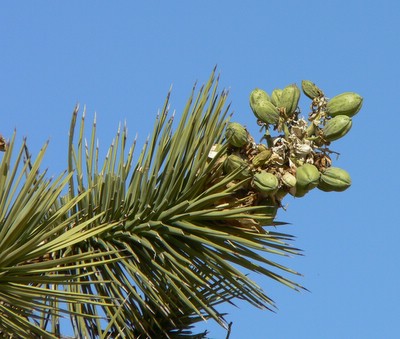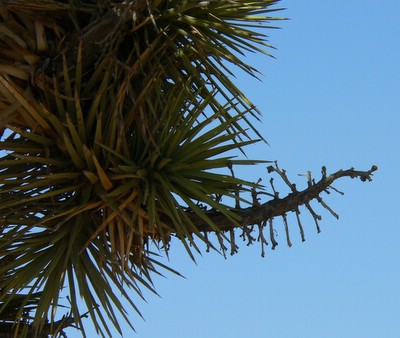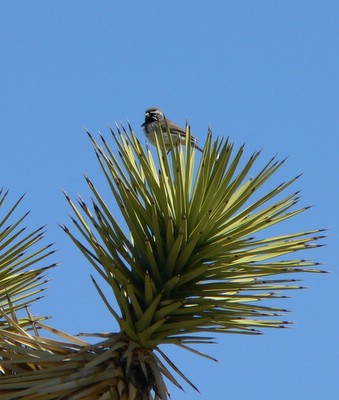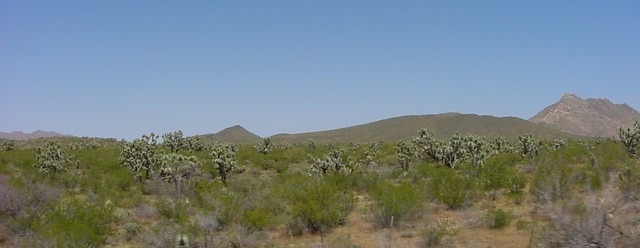Our
Trip West
Day
1
Day
2
Day
3
Day
4
Day
5
Day
6
Day
7
Day
8
Day
9
Day
10
Day
11
Day
12
Day
13
Day
14
Day
15
Flora
Mojave
California
Cactus
 |
This information comes from the National Parks Service. By the mid 19th century, Mormon migrants had made their way across the Colorado River. Legend has it that these pioneers named the tree after the prophet Joshua, seeing the Joshua tree limbs outstretched in supplication, guiding the travelers westward. |
 |
Spring rains may bring clusters of white green flowers on the long stocks at branch tips. Like all desert blooms, Joshua trees depend on just the perfect conditions: well timed rains and for the Joshua tree, a crisp winter freeze. Researchers believe that below freezing temperatures may damage the growing end of a branch and stimulate flowering followed by branching. Some Joshua trees grow straight stalks; these trees have never bloomed, which is why they are branchless. In addition to ideal weather, the pollination of flowers requires a visit from the yucca moth. The moth collects pollen while laying her eggs inside the flower ovary. As seeds develop and mature, the eggs hatch into larvae which feed on the seeds. The tree relies on the moth for pollination and the moth relies on the tree for a few seeds for her young, a happy symbiosis. The Joshua tree is also capable of sprouting from roots and branches. Being able to reproduce vegetatively allows a much quicker recovery after damaging floods or fires which may kill the main tree. |
 |
The Joshua tree's life cycle begins with the rare germination of a seed, its survival dependent upon well timed rains. Young sprouts may grow several inches in the first five years, then slow down, averaging one half inch per year thereafter. The tallest Joshua tree in the Joshua Tree National Park looms a whopping forty feet high, a grand presence in the Queen Valley forest; it is estimated to be over nine hundred years old. These "trees" do not have growth rings like you would find in an oak or pine. This makes aging difficult, but you can divide the height of a Joshua tree by the average annual growth of one half inch to get a rough estimate. |
| Some seeds are eaten, and some drop and may make new trees.. The only thing that pollinates this tree is the yucca moth, and they lay their eggs in the flower. Then the larvae eat the seeds. |  |
| Birds like the view from the branches. |  |
This tree grows abundantly at Joshua Tree
National Park in California and Joshua Forest Parkway in Western
Arizona. |
| Much of the information on this page comes from the
National Park Service. For more information, check out http://www.joshua.tree.national-park.com/info.htm |